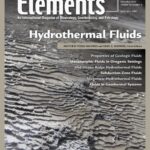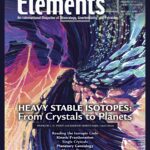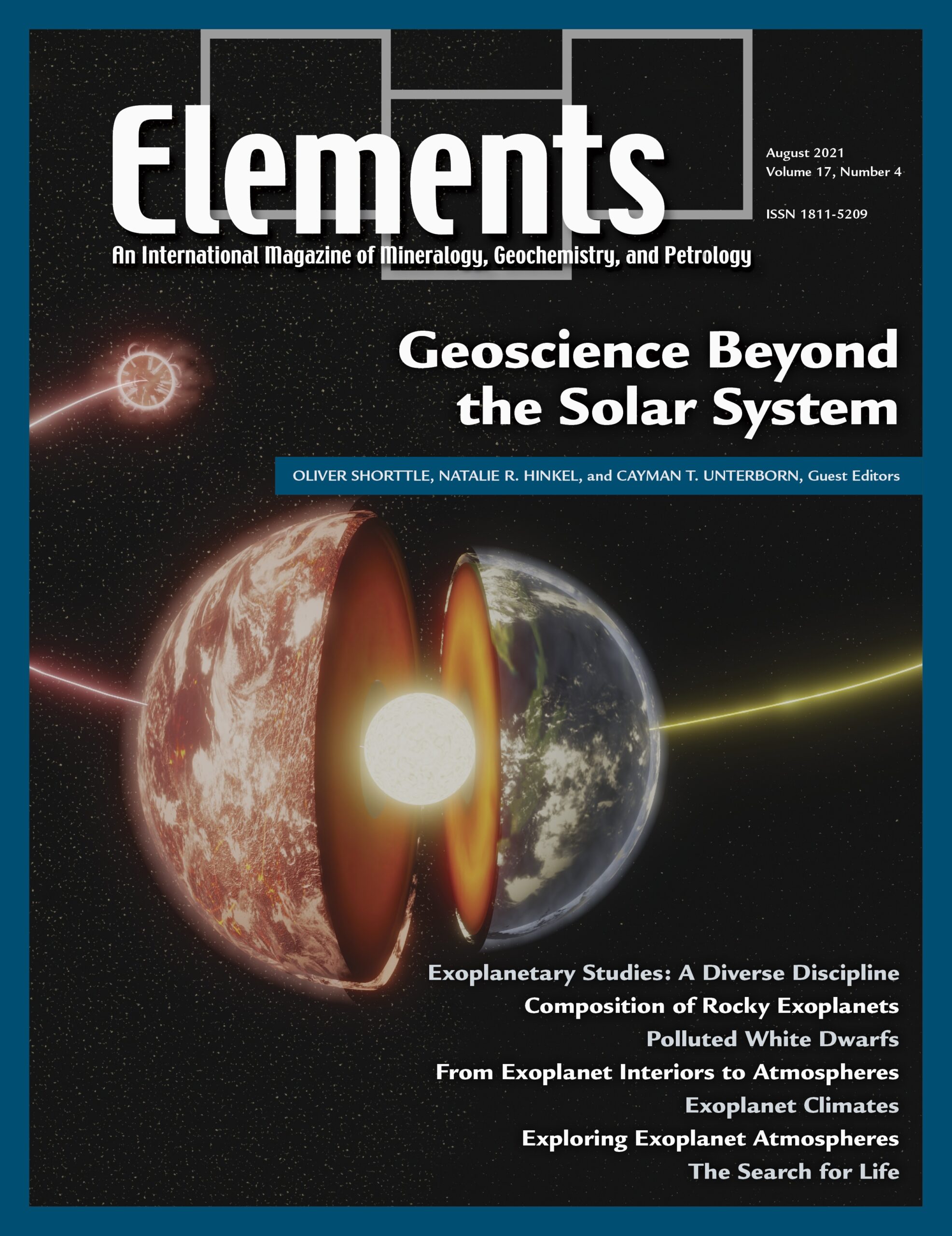
Hydrothermal Fluids, December 2020, Vol. 16, No. 6
June 28, 2024
Heavy Stable Isotopes: From Crystals To Planets, December 2021, Vol. 17, No. 6
June 28, 2024Geoscience Beyond The Solar System, August 2021, Vol. 17, No. 4
$20.00
A revolution in astronomical observation has expanded the horizon of geological processes out from the handful of rocky and icy bodies in our solar system to the now thousands of planets detected around other stars (“exoplanets”). A major result from this burgeoning field is that rocky planets are the most abundant.
Geoscience Beyond The Solar System
August 2021, Vol. 17, No. 4
A revolution in astronomical observation has expanded the horizon of geological processes out from the handful of rocky and icy bodies in our solar system to the now thousands of planets detected around other stars (“exoplanets”). A major result from this burgeoning field is that rocky planets are the most abundant. A remarkable ~11% of Sunlike stars host planets similar in their size and incident flux to Earth, whilst many more planets may exist in states relevant to past periods of terrestrial evolution, either trapped as perpetual magma oceans or locked into a snowball climate. This issue highlights the myriad opportunities exoplanets represent for investigating fundamental geological processes and the opportunities for the geosciences to contribute to this exciting young field.
Why You’ll Love Elements Magazine:
- Expert Contributors: Articles written by renowned researchers in the field of geoscience.
- Engaging Content: Join a community of readers who are passionate about Elements.
- Exceptional Quality: Each issue is printed on high-quality paper with stunning visuals and detailed illustrations that bring complex scientific concepts to life.
Order your copy of the August 2021 issue of Elements magazine today and explore geoscience beyond the solar system.
Related products
-
Diamonds, March 2005, Vol. 1, No. 2
$20.00Diamond, the fascinating ultrahard mineral, is the focus of considerable interest and scientific research. Recent advances particularly relevant to geoscientists include: diamond as a recorder of Earth processes from the perspective of inclusions, chemistry, and conditions of formation; synthesis for research applications and processing to modify color and physical properties, important to diamond gems and anvils; the implications of nanodiamonds from meteorites.
-
Frontiers In Textural And Microgeochemical Analysis, August 2007, Vol. 3, No. 4
$20.00Recent advances have been made in high-resolution in situ methods to image mineral growth patterns, analyse compositional and isotopic zonation, and improve our ability to visualize, study, and model rock textures in three dimensions. These advances provide a significant step forward in the understanding of how rocks form and the history they can tell us.
-
Nanogeoscience, December 2008, Vol. 4, No. 6
$20.00At first glance, nano and Earth seem about as far apart as one can imagine. Nanogeoscience seems to be a word connecting opposites.




